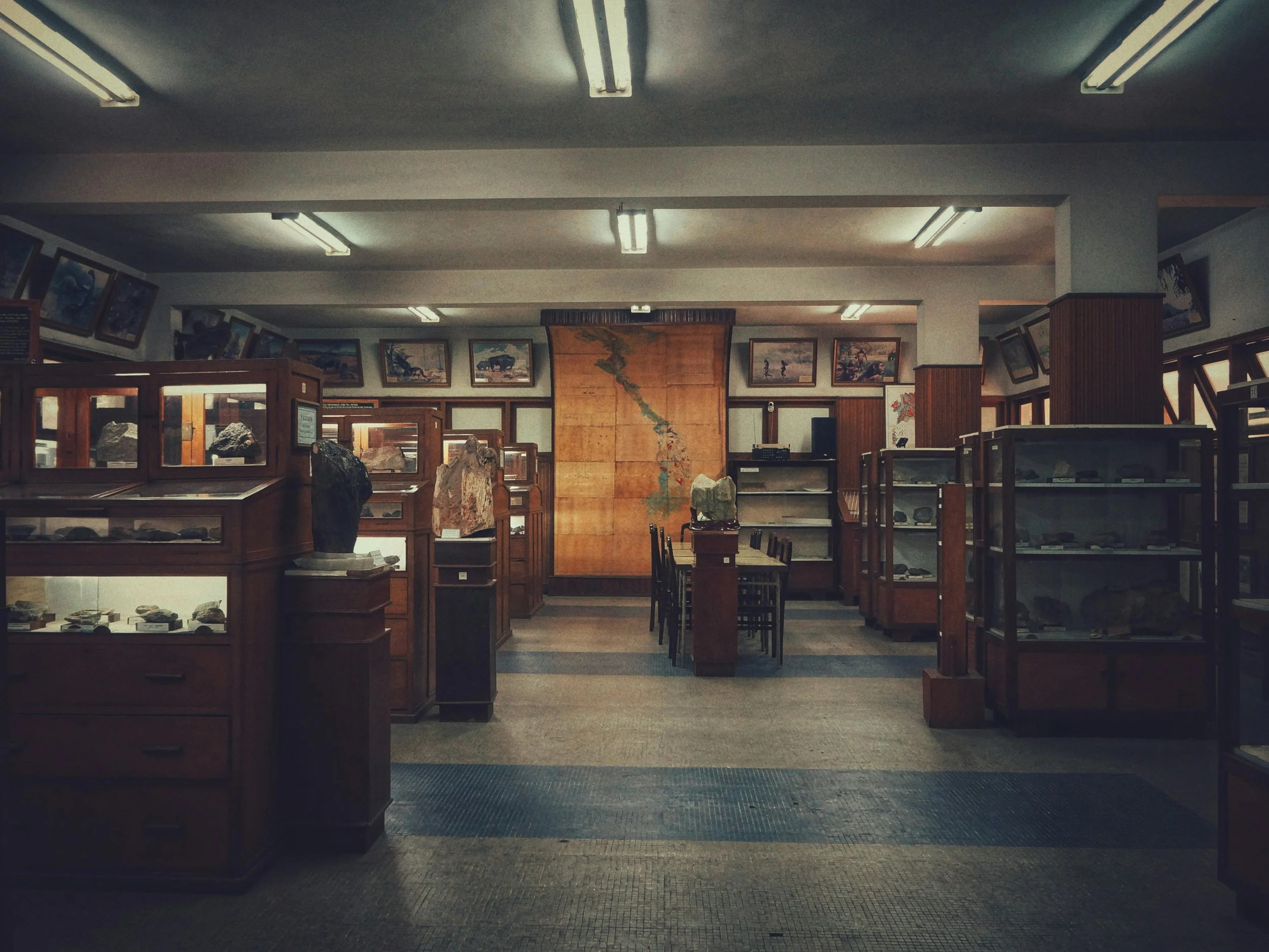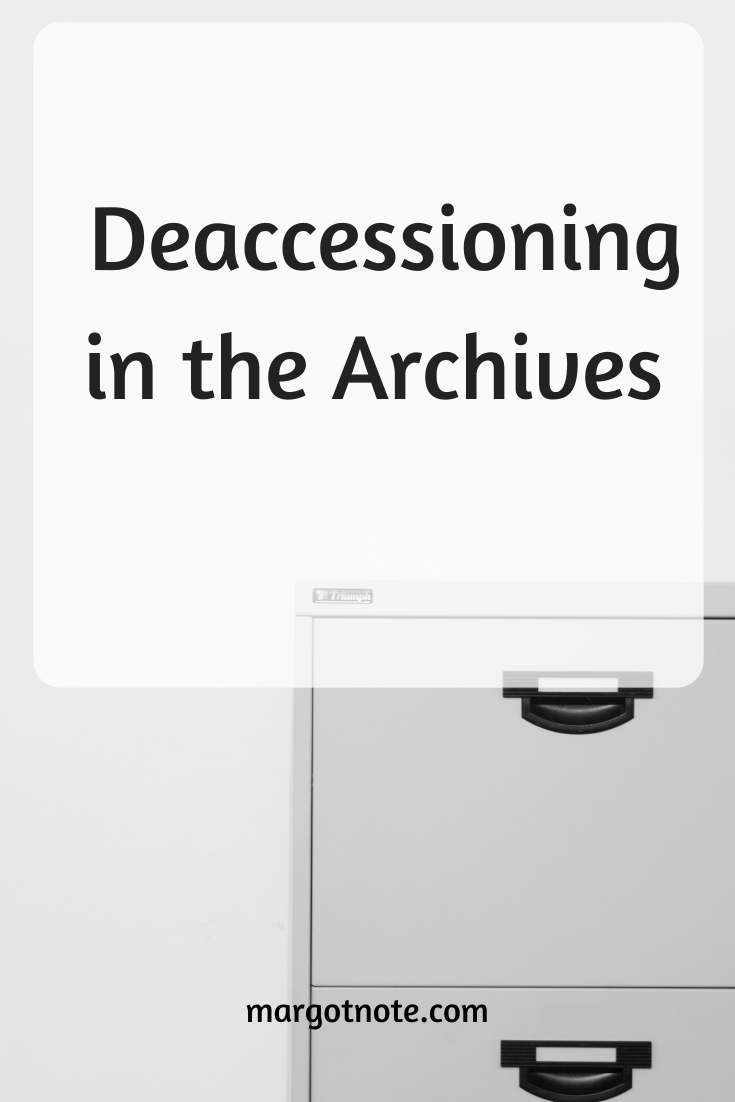Deaccessioning of archival holdings, the process in which an archives removes accessioned materials from its holdings, is one potential result of reappraisal. Ideally, deaccessioning would occur regularly in the course of archival collections management practices. As a routine procedure, it would allow archival institutions to remove materials determined to be unworthy of retention.
The Society of American Archivists defines deaccessioning as “the process by which an archives, museum, or library permanently removes accessioned materials from its holdings.” This definition separates decisions made before materials are acquired and entered into a repository’s recordkeeping system from those made after materials officially become part of the repository’s holdings.
Deaccessioning is more often discussed in the library world than in the field of archives. Weeding a book collection is more pragmatic for librarians, and they assume other copies of books exist elsewhere. Librarians don’t have to worry about potential donor implications of deaccessioning—or the unique, one-of-a-kind nature of archival materials.
Why Should Archivists Deaccession?
There are several valid reasons why archivists may wish to deaccession parts of their holdings. Materials may no longer be useful or relevant to the repository. This decision, of course, implies that a conscious assessment based on current collecting policies and research demands has been performed. Materials may be deaccessioned if they cannot be properly stored, preserved, or made available. They could also be deaccessioned if they no longer retain their physical integrity, identification, or authenticity. A choice in favor of deaccessioning may come because the information is duplicated in other collections. Lastly, the materials may be part of a collection housed at another repository, so combining the two is a logical step.
Types of Deaccessioning Options
Deaccessioning consists of several options. Materials could be:
Discarded or destroyed
Transferred to another repository
Returned to the donor
Sold, with the proceeds used to benefit the future acquisitions of the repository
Deaccessioning in Real Life
When I think about deaccessioning, I’m reminded of a client from several years ago. The college archives lacked both an acquisition policy and a collection policy. Archival acquisition happened when faculty and staff members retired or moved offices, or during campus renovations. Over time, the archives became known as the place to send old stuff on campus.
When reviewing the materials in the collection, we found boxes of popular magazines documenting John F. Kennedy’s presidency and the Apollo 11 moon landing. Although the materials were interesting and historical, they had no connection to the college, lacked a deed of gift, and would not fit into the future collecting policy. I advised that the magazines should be deaccessioned and considered for sale on eBay. Since the magazines were in excellent condition, the small amount of money raised could be used support archival activities.
I also cautioned that just like the weeding of library collections, deaccessioning items in the archives can be a sensitive area, especially for those who don’t understand the importance of maximizing work on set parameters Before deaccessioning any items, I noted that the collection policy should be clear about the proper deaccessioning procedure and include the necessary signoffs.
Deaccessioning Done Right
Once the decision is made, the implementation of deaccessioning activities has its own set of requirements. For example, the decisions involved in deaccessioning must be consistent with the repository’s mission, collecting policy, and appraisal guidelines. In addition, written policies, procedures, and documentation are required throughout the deaccessioning process. Selling the materials instead of transferring them raises other questions that should be addressed by policy. Materials with monetary value require special consideration, rather than simply being moved to another home.
The activities of deaccessioning should be performed in a systematic manner. When appropriate, the donor should be notified that such action is taking place to alleviate public relations problems. Transparency throughout the archival collections management process, including deaccessioning, strengthens donor relations. Deaccessioning done right allows archival repositories to concentrate their limited resources on collections with the most enduring value to researchers and society as a whole.
The blog was originally published on Lucidea's blog.































